Two Months With: The Huawei TalkBand B2
by Ian Cutress on May 11, 2016 4:00 PM EST- Posted in
- Huawei
- Wearables
- TalkBand B2
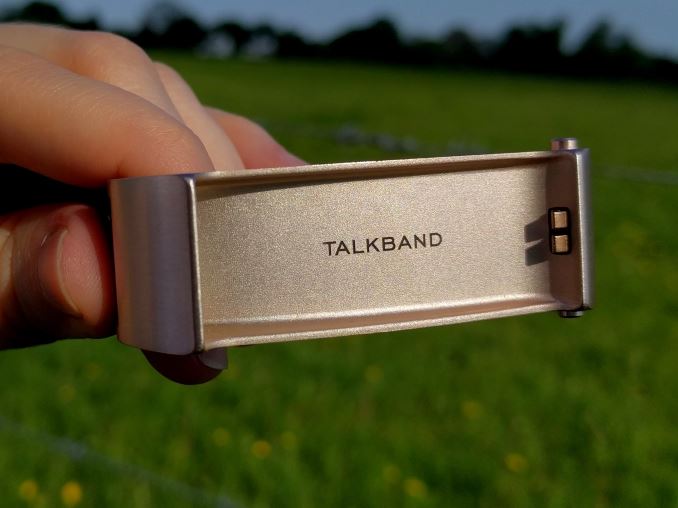
As part of the test with the Huawei Mate S, I also decided to use Huawei’s TalkBand B2 wearable which I got at the end of a press event. I have been using it for a good couple of months or more, from just before MWC. Along with the smartwatch, there is the Huawei Fit app required to digest the data it tracks.
Having never used a smartwatch-like device before, and not being enthusiastic about wearing one, I bit the bullet to at least experience it. I’ve come out the other end not completely changed, and the TalkBand B2 has a list of issues that need solving, but I have softened my opinion to smartwatches as a result.
So, the TalkBand B2: it shows the time/date, steps, calories, time slept, time biked and you can start then stop a ‘run-mode’ with it.
The display is a basic black and white affair, but sharp enough for almost all the detail you need to see on it. It’s called a TalkBand, and this means that via Bluetooth you can receive calls and minor notifications on it. The notification pop-up is not as advanced as you might think - merely showing what app or name is causing the notification, rather than any details. This is useful if the user wants to keep an eye on a certain app (I tend to keep it linked to WhatsApp and Twitter which I use several times a day, but not Skype because that is always going off).
Taking calls on the TalkBand B2 is a little odd, and I have not had much success with it. The band will vibrate as someone calls (useful when the phone needs to be silent), but then I will go find my phone to answer it forgetting that I can answer and talk on the watch. So I answer the phone, but the setup is such that it will only accept voice from the band and not the smartphone, meaning I sound muffled as I do not realize that I’m supposed to talk into the watch. Even then, because audio going in and coming out of the smartwatch is usually loud, you can’t really have a private conversation. I don’t think I’m sold on taking calls on a watch just yet.
The screen has a feature that turns itself on when it detects movement that mimics looking at a watch on your wrist. Do the motion repeatedly and it will go through the different screens on the display. However, it has a few flaws. Firstly, the flick wrist motion to see the time only seems to work about 40% of the time. Then, in broad daylight, the display is nowhere near bright enough to even see anything. But, at night, when you want the device to monitor sleep patterns, any time you turn over it turns on the display which is way too bright, either blinding yourself or a significant other at 3am. It’s not great.
On the monitoring aspects of the device, I feel that the step counter is not that great. It recorded over 66000 steps and 45 km during Mobile World Congress, but it also detected 500 steps when I was packing my suitcase the day we left. This makes me think that a step counter is better suited for the ankle perhaps. An interesting thing is the cycling detection: while at the gym on the treadmill, I will sometimes rest my hands in front of me on the heart-rate monitors while jogging/walking in a down period, but then my steps do not count and because of the arm position. As a result, the TalkBand thinks I’m cycling. So in a 45-minute run, it will detect running for 25-30 minutes and cycling for 10-15, which isn’t true, and messes up the calorie calculations. A better way perhaps to do this is via the user indicating a cycle time, similar to enabling the start of a run.
The sleep monitor works when the watch is worn in bed. The thing is, if the feature that shows the display when you rotate your wrist is enabled, the screen is far too bright at night. When not being blinded by the light, the TalkBand has a feature where during a 30-minute ‘alarm’ period set by the user (say 6:00-6:30am). If it detects the user in a light sleep mode it will vibrate to wake the person without the need for an alarm. This means that the user won’t wake from a heavy sleep, feel fresher, and it won’t wake their significant other. The downside of this is that if you are never in a light sleep during that period, the smartwatch won’t go off. That’s assuming the TalkBand has any battery left (see later). But a final word on the sleep monitor: sometimes when you take the watch off (either for comfort or to charge), it sometimes detects the lack of movement as a sleep pattern. So despite wearing it all day, if I’ve taken the watch off at some point to do the washing up, it might tell me that I slept for a couple of hours in the afternoon (which I definitely did not do).
The TalkBand B2 is a detachable module from the wristband, allowing for configurable straps. In this instance, I used the one supplied - a leather band in a silver backing. The device is easy enough to remove, and small enough to lose if you aren't too careful. On the rear is the charging port and what looks like the speaker which uses the internal open space in the wristband as an echo chamber to amplify the sound.
On the battery, this is going to be a pain point for anyone using the TalkBand B2. In order to charge it, the unit has to be removed from the clasp and the micro-USB port on the bottom used, meaning that the device cannot be used while charging (which takes around 30 mins for a full charge). For the most part, it lasts two days on a full charge. It uses more when you are exercising, up to 10% per hour, but the two days per charge means that I was always destined to either go to bed, or to the gym, on 2% battery. Even a small 15-minute window to charge it can give it enough juice for most of the day. During some of the time that I tested the device, I remembered to charge it while I was in the shower. But to put this into real world context, in March, I forgot to charge it about 20% of the time meaning it lacked sleep data collection, or for several days during April I forgot to charge it and wear it overnight.
On the data collection, the screen shots here pretty much sums it all up, telling the user how much sleep and how many steps. It is up to the user to decide what to do with the data, and I’m not sure how much might be being uploaded to a personal account. If you are trying to maintain a regular exercise and sleep schedule, it gives rough metrics that can be interpreted on whatever side your confirmation bias ends up on, but at the end of the day the only thing that makes this data collection useful is if it provides recommendations, and the TalkBand and Huawei Wear app currently do not do that. Actually, I’ll adjust that statement: if it detects you are sitting down for more than an hour, it will vibrate to tell you to stand up. Somewhat annoying when watching a film or on a long haul flight, and the time gap is not adjustable.
At the end of the day, I am glad I’ve tried the TalkBand B2. It’s not the best device for me, because of the brightness (especially at night-time) and the battery life really puts a dampener on the user experience, but it comes in a lot cheaper than the Android, watchOS or Tizen-based devices if you absolutely need a screen. If another smartwatch ever floats my way, I’ll see how that compares to this one.







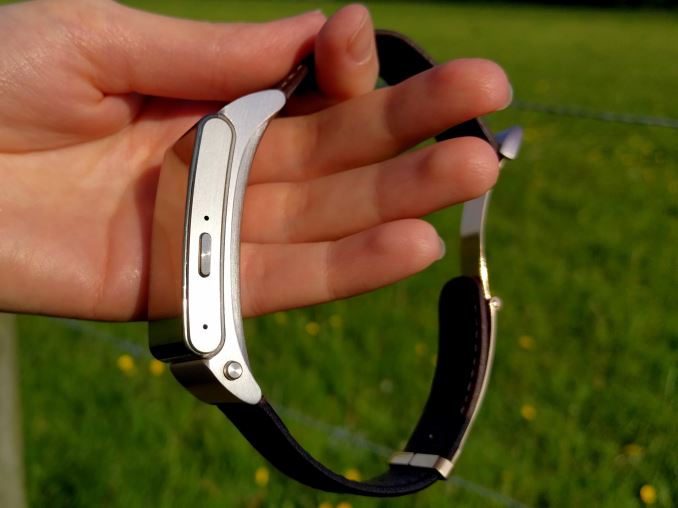

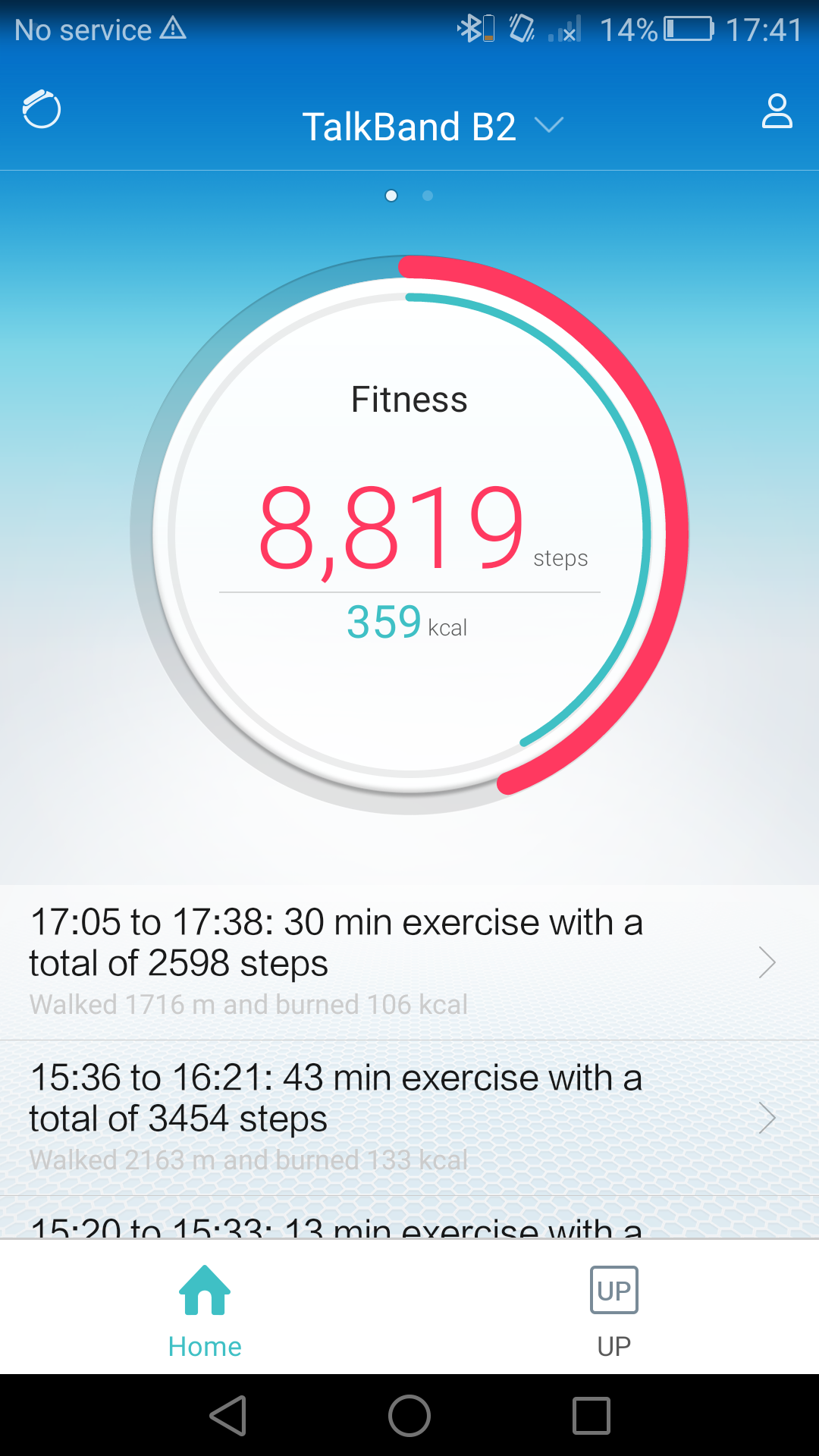

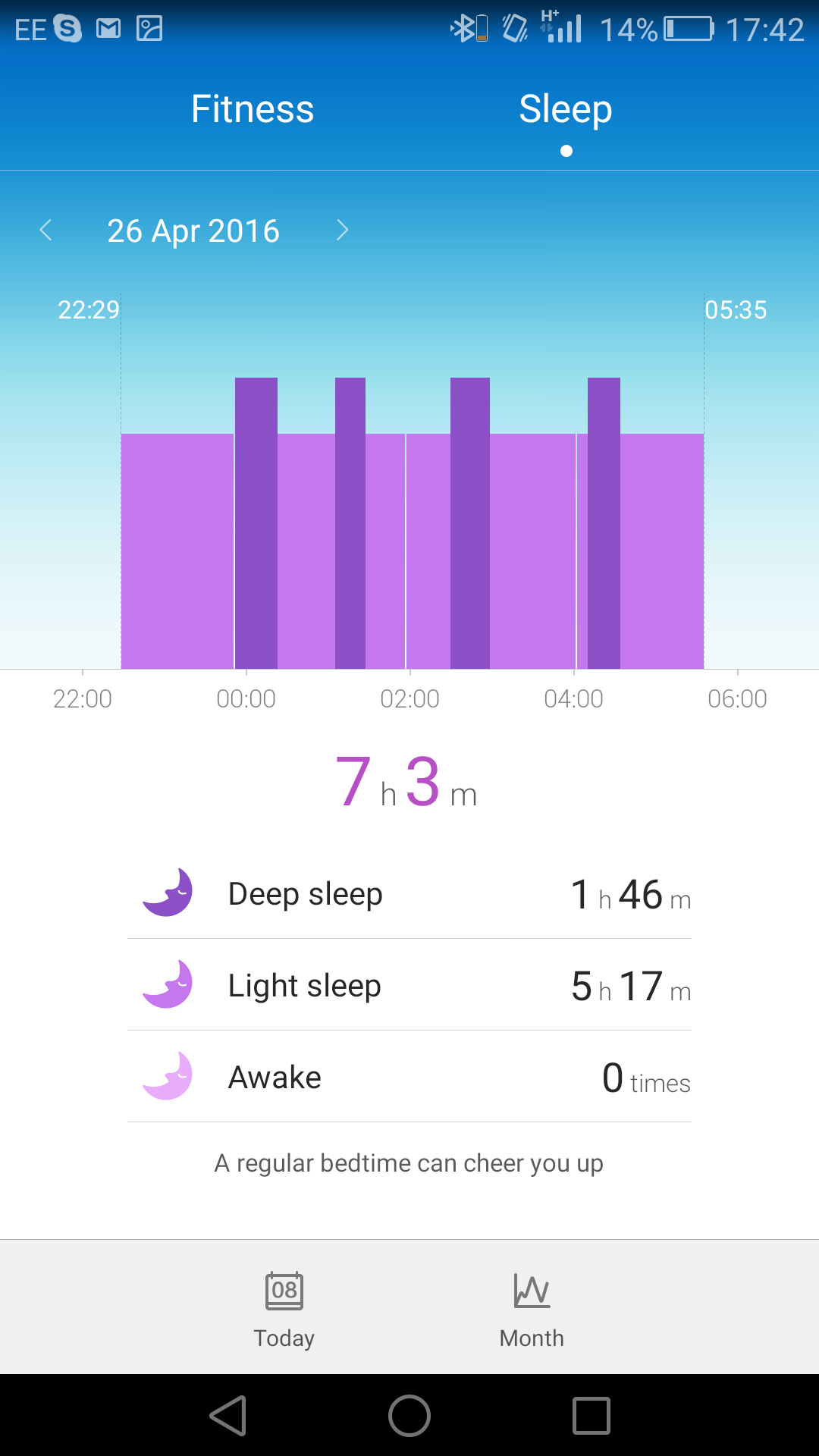
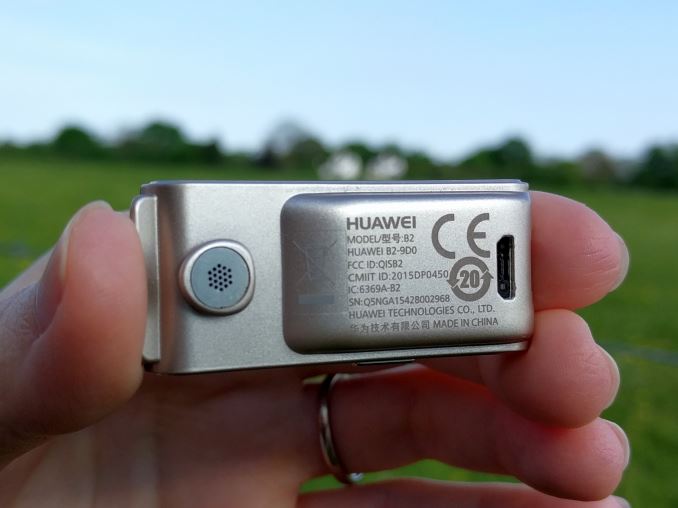
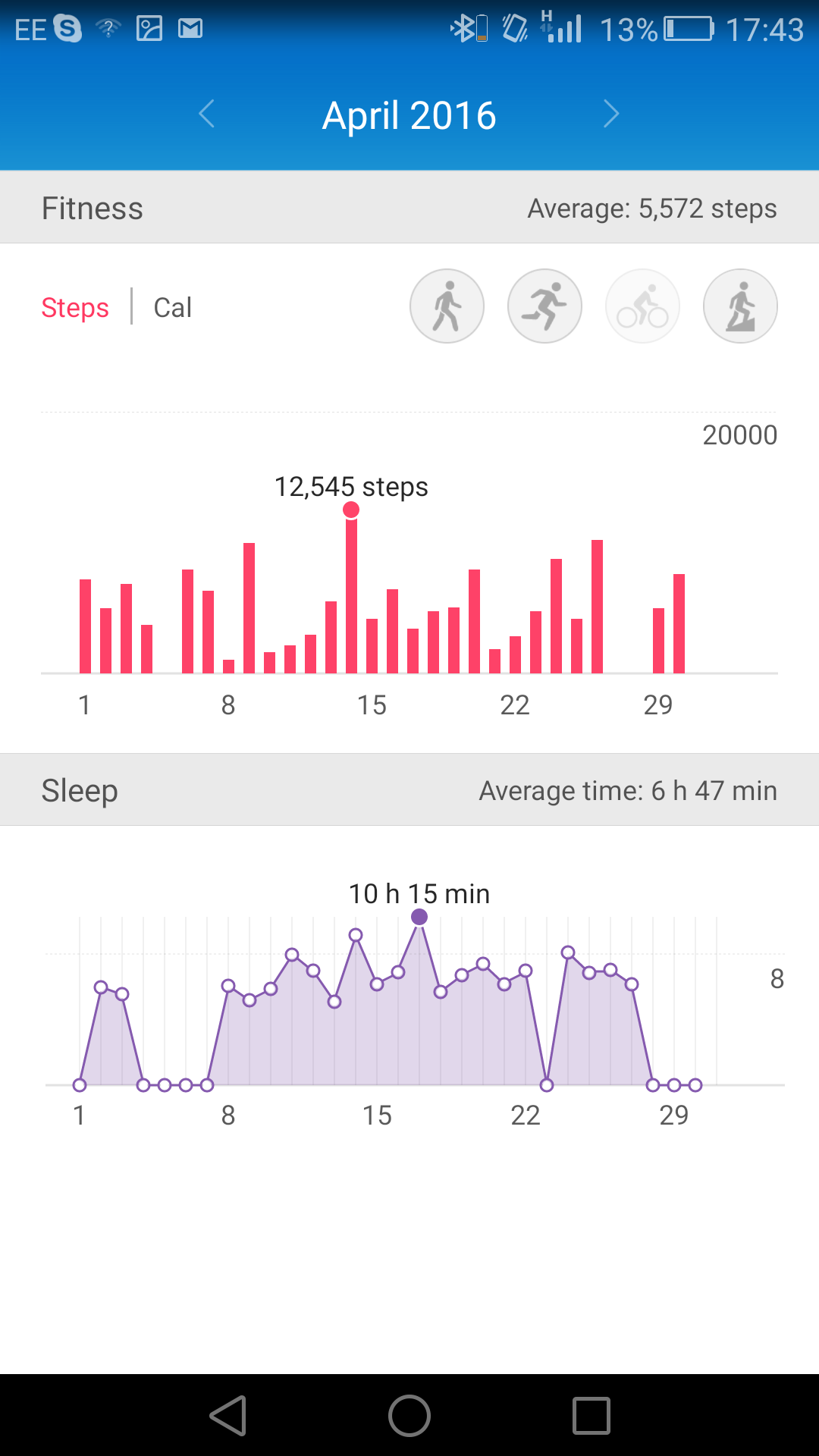
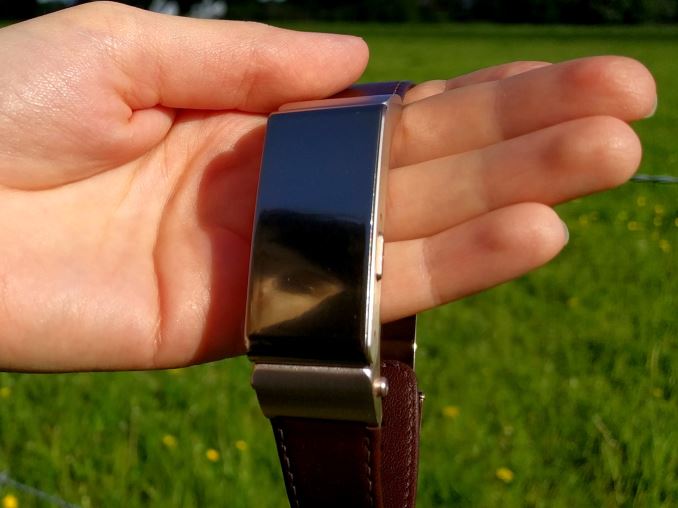














29 Comments
View All Comments
Michael Bay - Thursday, May 12, 2016 - link
But it has no way to know when you are consuming calories or the amount.I think you wanted to say reduce.
Murloc - Thursday, May 12, 2016 - link
by consume I mean use up. Cars consume fuel when they are driven not when they're filled up.You have to count the calories you eat ofc.
jabber - Thursday, May 12, 2016 - link
Losing weight is really simple. You just cut out the stuff you know (as an intelligent person) that makes you put on weight. You just have to have will power to make sure you keep away from them. I don't know why people go to such lengths of misery and expense like Gyms etc. The people I know that go to Gyms regularly are physical wrecks and always ill. You may as well lick Hospital beds for fun.shadarlo - Thursday, May 12, 2016 - link
You must know very strange people.Simply not being overweight doesn't mean your healthy. Exercise is not an optional thing, if you don't do it your heart isn't healthy, your muscles aren't healthy, you're just not "overweight". Skinny fat can be just as unhealthy as overweight fat.
Cliff34 - Thursday, May 12, 2016 - link
Not necessary, true. I used to go to gym bc winter time is too cold to do anything outside. Then again I do triathlon so I'm a little nuts on that end.Murloc - Thursday, May 12, 2016 - link
some people do training just for fitness and not body building and they don't destroy their joints.Just cutting stuff out like sweets is limited advice because maybe the issue is that they're eating huge portions of pasta or mashed potatoes as well.
Also people with bad motivation aren't able to simply exclude their favourite food from their diet, you're making it more difficult with that advice.
Some people also do not realize how many calories each kind of food gives you.
It's much better to dose it all correctly by counting calories and adjusting portion sizes.
Of course, some foods like sodas just have to be cut out as there's no way to do it with hypercaloric stuff.
jabber - Friday, May 13, 2016 - link
Counting calories is strictly for girls, like clear alcohols.fanofanand - Thursday, May 12, 2016 - link
"but it comes in a lot cheaper than the Android, watchOS or Tizen-based devices if you absolutely need a screen."Considering you never listed the price of the device nor the competing devices, what an informative statement. How can you review a product and never once mention price other than "It's cheaper"? Come on Ian, you are one of the brightest minds I have the pleasure of reading, but without knowing the price there can be no context.
name99 - Thursday, May 12, 2016 - link
"[...]and messes up the calorie calculations. A better way perhaps to do this is via the user indicating a cycle time, similar to enabling the start of a run."
Depends on exactly what you want to know. Apple's general solution to this, as far as I can tell, is to be most concerned with tracking heart rate, on the theory that heart rate => rate of oxygen => rate of burning body fuel => calories, and this is true regardless of the details of whatever exercise you're doing.
Biologically this all sounds plausible to me, and works out IF your primary concern is calories burned (and related matters like giving your pulmonary-vascular working). If for some reason you REALLY want to know these details like number of steps, of course, it's less than ideal because that's not what the system cares about the most.
The cost, for the Apple solution, is power --- that heart rate monitor burns power like nothing else on an Apple Watch. I'd say my hour or so of daily exercise uses up about 50% of my Apple Watch battery, while the rest of the day uses up about 25%.
That is the primary reason Apple Watch requires you to enter "workout mode" rather than just tracking you all the time. So I guess it's not a feasible option for any device where a selling point is battery life...
mpinter262 - Thursday, May 12, 2016 - link
Ian, you appear to have missed a very important piece of the device. There should have been a silicone earpiece to fit over the small speaker in the back. It is a little odd at first because the silicone part fits in your ear, not over it, but I've found it holds very tight and people i call say the call quality is great. The removable module is a Bluetooth earpiece! You shouldn't be talking into the watch on your wrist. You'll find it much better that way. When you get a call, just unstuck the module and it will answer the call without having to touch your phone.http://www.wareable.com/media/images/2015/05/img-6...